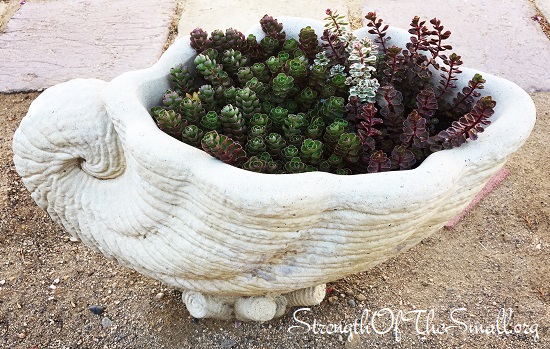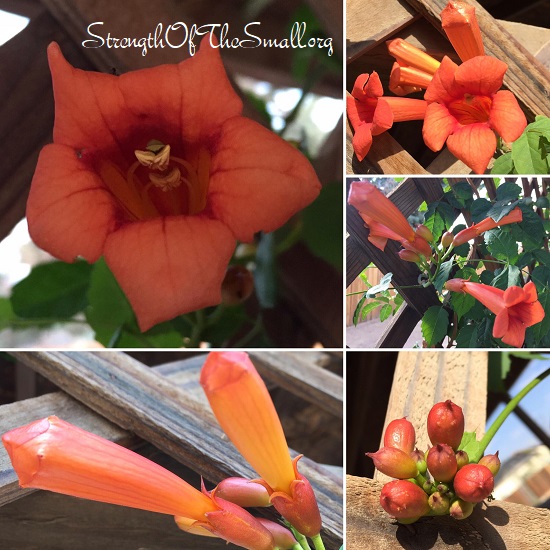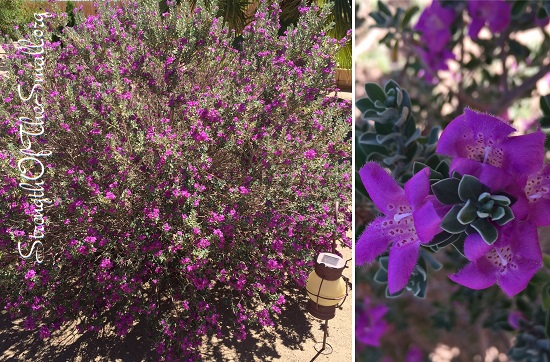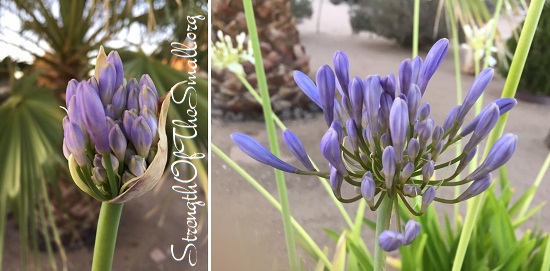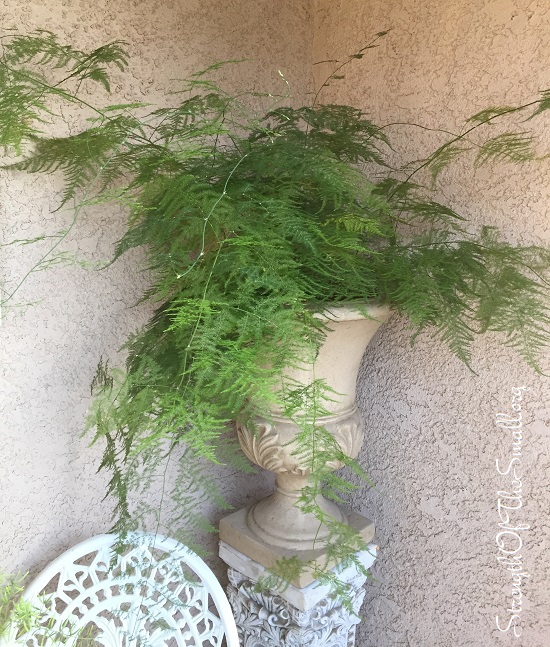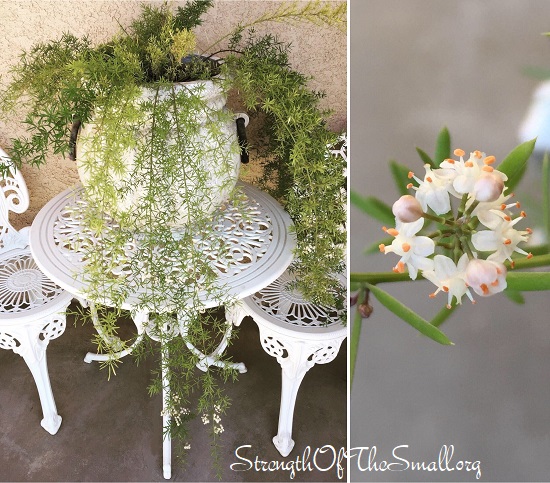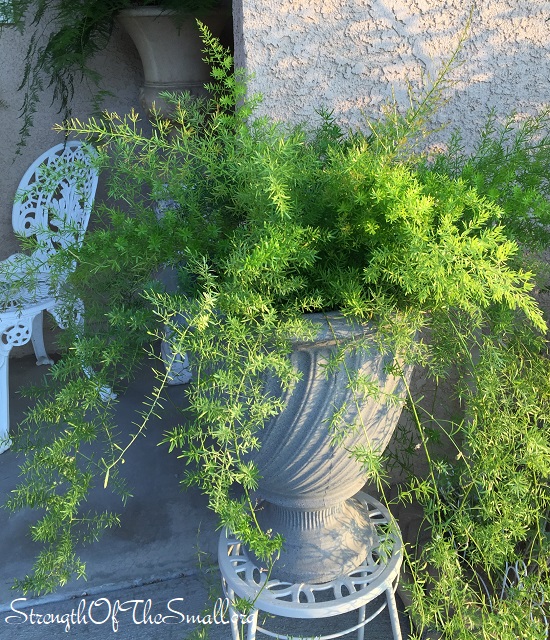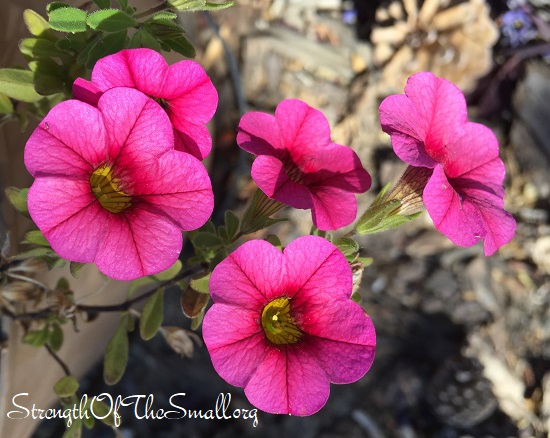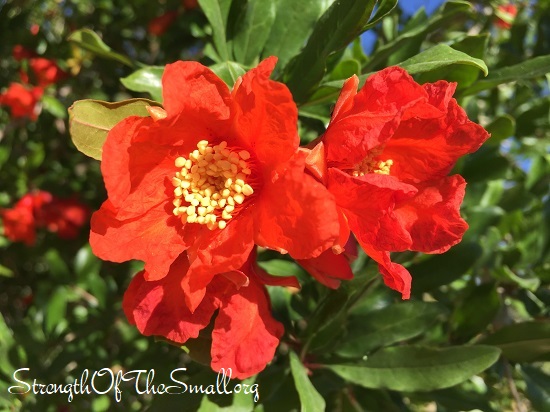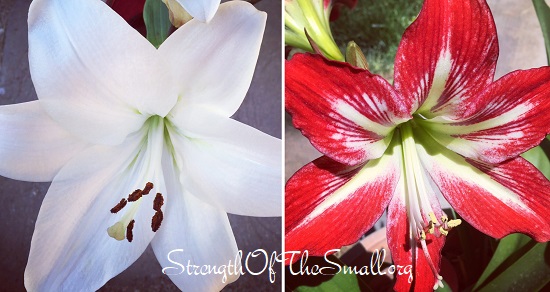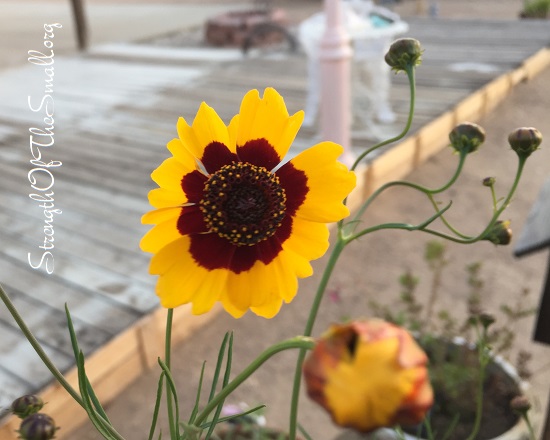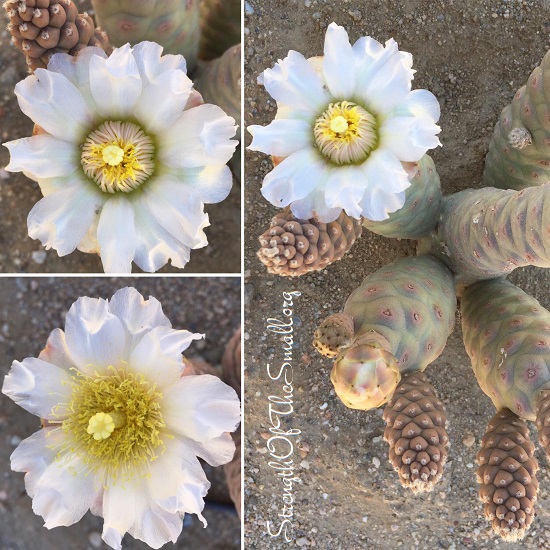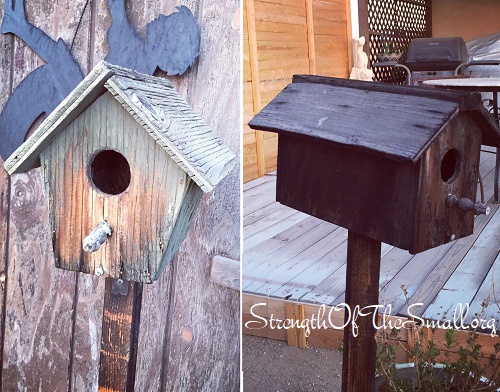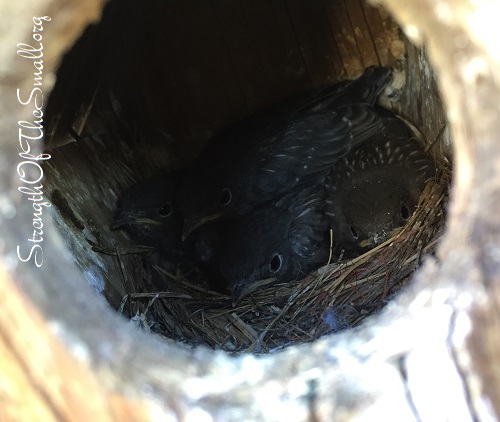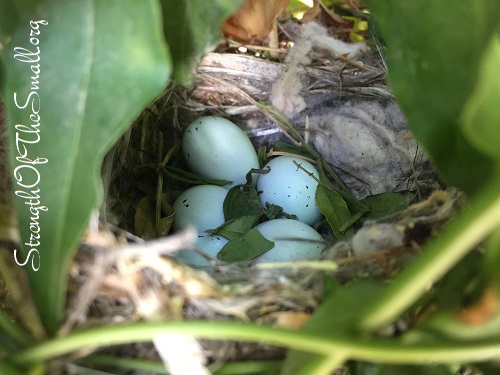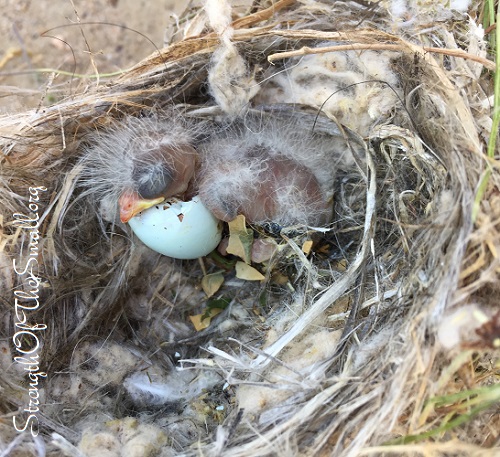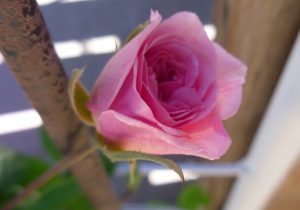It’s October, the weather is cooling down and still not a drop of rain in some parts of the High Desert. In the midst of everything, I am still grateful to Mother Nature. The winds are picking up and allergies will soon be on the rise …
I haven’t done much gardening lately; however, strolling through my front and backyard yard, I catch a glimpse of beauties here and there. My Hybrid Tea Tree Rose Rio Samba isn’t doing so well. I have had it for over ten years now, and it was doing well until last year; I suspected curl grubs and other soil pests and took care of it. A couple of weeks ago I was pleasantly surprised to see a couple of buds emerging from the trunk, and last week one of the buds bloomed.
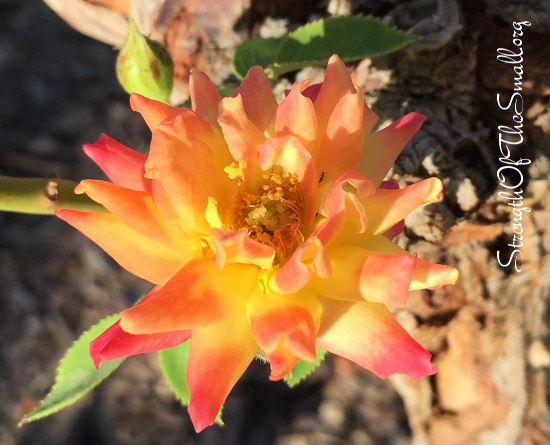
The Crassula capitella I propagated through cuttings a couple of months ago are covered in white flower buds atop the stems. I am looking forward to seeing those buds open up.
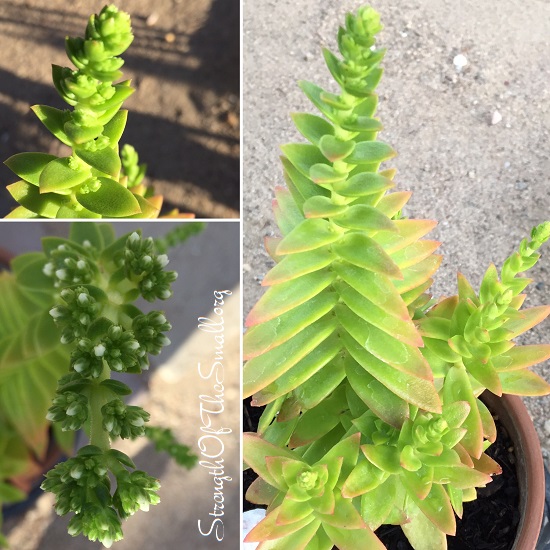
I spotted a very small White Moth resting on the leaf of a Gopher Plant; possibly Cataclysta Lemnata, also known as Small China-mark. According to The Bay Magazine Swansea, their larvae develop underwater, after which the caterpillars feed on duckweed and live underneath the tiny plants floating on the surface of ponds and lakes. In order to disguise themselves, Small China Mark caterpillars fashion tube-like silken cases for themselves which they cover in duckweed, rendering them all but invisible.
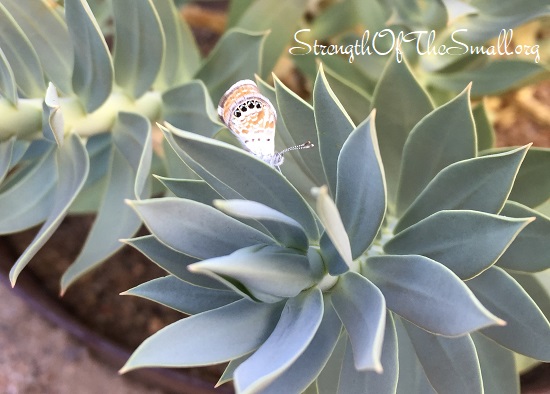
Sunsets in the High Desert never cease to amaze me. Below is an image of the sun shining through a gap between the clouds while setting. It’s simply beautiful.
According to GeographyReal.com, as air descends, it increases in temperature, a process known as adiabatic warming or heating. That effect of descending air being warmer and drier is what created gaps in cloud coverage.
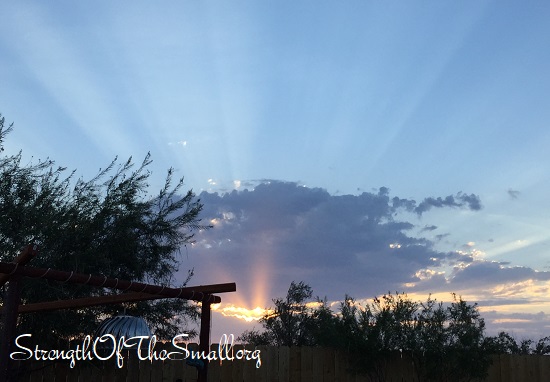
A couple of week ago, at sunrise, the sun was orange-red due to smoke particles in the sky blown from various wildfires.
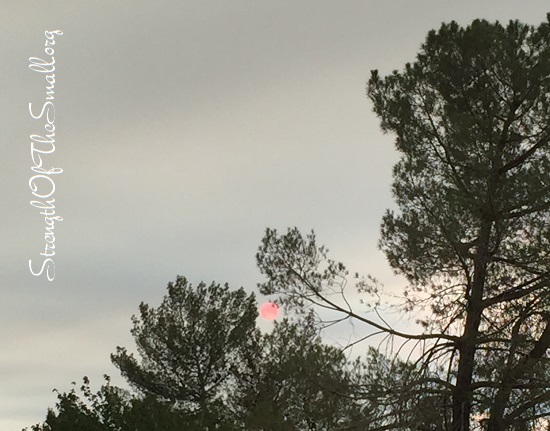
Happy new month and happy gardening.
